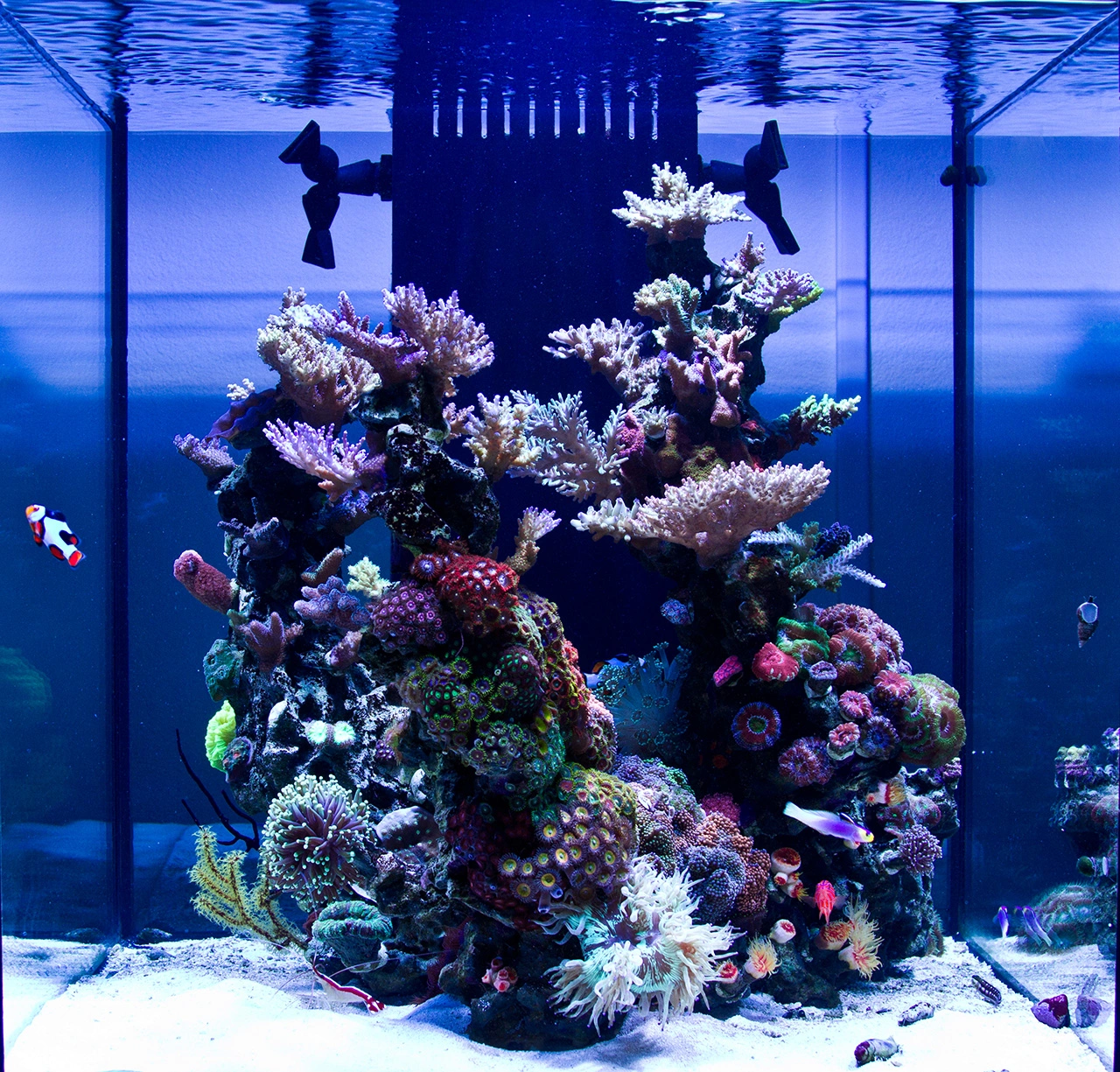Stunning 60-Gallon Reef Tank – MedRed's TOTM | NanoReef

Tank Specifications
Volume: 60 Gallons / 227 Liters
Dimensions (L × W × H):
24.0" ×
24.0" ×
24.0"
61.0cm ×
61.0cm ×
61.0cm
Equipment List
- Salt: Seachem
Frequently Asked Questions
What should I include in my daily maintenance routine for a reef tank?
Daily maintenance should include feeding your fish with a high-quality pellet or flake food, like Instant Ocean Marine Pellets. It's also important to use a mag float or similar device to scrape algae off the glass to maintain visibility.
How often should I do water changes and how much water should I change?
You should perform a water change every week, changing out 5-10 gallons. This helps maintain water quality and nutrient levels essential for coral and fish health.
What monthly tasks should I perform to keep my reef tank healthy?
On a monthly basis, you should change out your chemical filtration media such as Purigen and Chemipure Elite. This ensures that your water remains clear and free of toxins.
How do I clean my skimmer and other equipment?
You should clean your skimmer, pumps, and bioreactors biannually to prevent buildup of organics. Rinse them with water and lightly scrub any deposits. Consider soaking them in a vinegar solution if the deposits are stubborn.
What diet should I provide for my fish and corals?
Fish should be fed a balanced diet that includes pellets, flake food, frozen food, and specialized diets for particular species. For corals, consider supplementing their diet with Oyster Feast, PhytoFeast, and aquavitro fuel twice a week.
How do I ensure my corals are receiving adequate nutrition?
Corals, especially non-photosynthetic types, thrive on a diet of fine foods such as liquid coral foods, zooplankton, and smaller mysis shrimp. Be sure to deliver food where the corals can easily catch it, and feed them in the evening when they are most active in feeding.
What are the ideal water parameters for a reef tank?
Keep your water parameters stable with a salinity of 1.026, temperature between 78°-80°, pH around 8.0, calcium levels of 440-460 ppm, alkalinity at about 7 dKh, and magnesium levels around 1600 ppm.
How can I achieve and maintain stable water parameters?
Utilize reliable testing kits to monitor water parameters regularly and perform consistency in water changes. Use an automatic top-off system to maintain water levels and consider a dosing regimen for calcifying corals.
What type of lighting should I use for my reef tank?
A combination of metal halides with T5 supplementation is often recommended, as evidenced by the Giesemann Infiniti light used in this setup which provides good PAR and color spectrum for coral growth.
How do I manage algae growth in my reef tank?
Manage algae by maintaining good water quality through regular water changes, proper feeding, and using a cleanup crew of snails and crabs that graze on algae. Use a refugium or algae scrubber to help control nutrient levels.